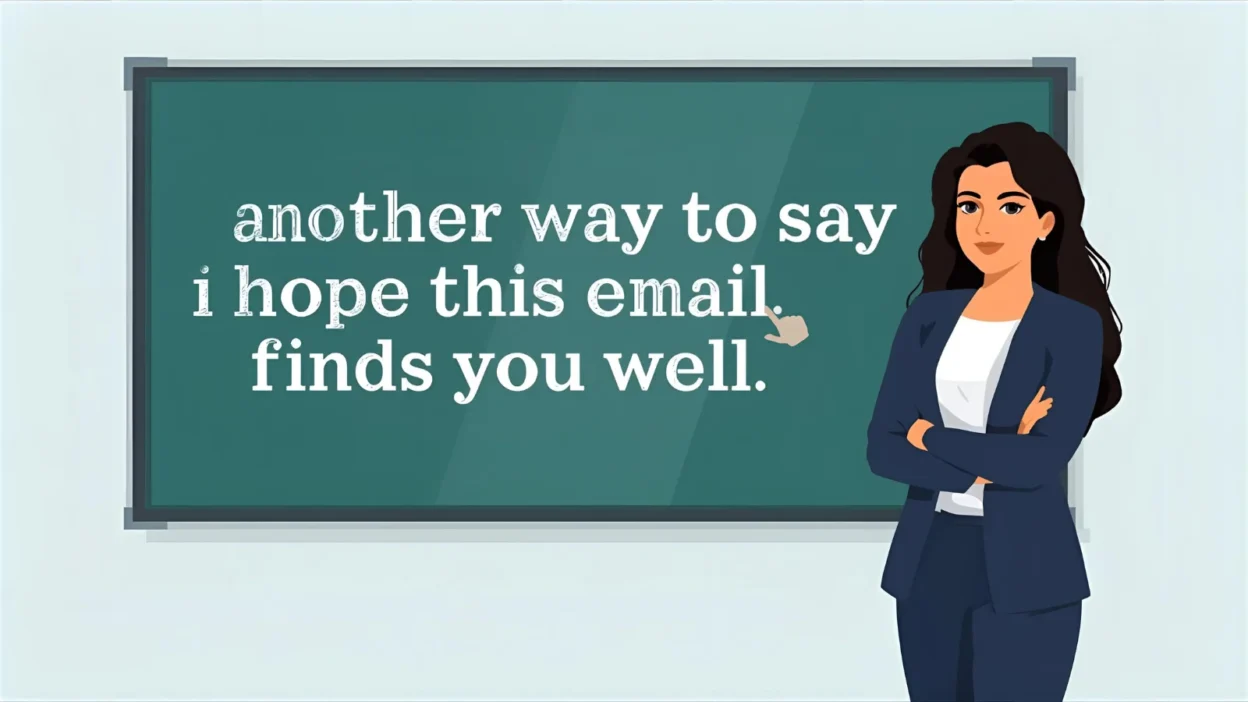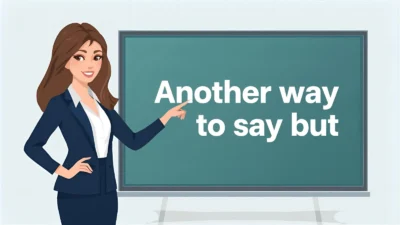The phrase “I hope this email finds you well” is one of the most common openings in professional emails. While polite and respectful, it has become so overused that it can feel cliché or insincere. If you want your emails to stand out, consider using alternatives that fit your tone—whether formal, friendly, or casual.
In this article, you’ll discover 35 polished alternatives to “I hope this email finds you well,” each with meaning, explanation, example, best use case, and tone guidance.
1. I Hope You’re Doing Well
Meaning: A simple expression of goodwill.
Explanation: Direct and friendly without sounding too formal.
Example: “I hope you’re doing well. I wanted to follow up on our meeting last week.”
Best Use: Professional but warm emails.
Tone: Polite, approachable.
2. I Trust You’re Having a Good Week
Meaning: Expresses trust that the recipient is doing fine.
Explanation: Slightly formal but warm.
Example: “I trust you’re having a good week. I’m reaching out regarding the proposal.”
Best Use: Business correspondence.
Tone: Professional, respectful.
3. I Hope All Is Well With You
Meaning: A kind check-in phrase.
Explanation: A bit more personal but still professional.
Example: “I hope all is well with you. I’m writing to confirm tomorrow’s schedule.”
Best Use: Semi-formal communication.
Tone: Friendly, professional.
4. I Hope You’re Having a Great Day
Meaning: A cheerful opening.
Explanation: Adds a positive tone.
Example: “I hope you’re having a great day. I wanted to update you on the project timeline.”
Best Use: Less formal business emails.
Tone: Light, upbeat.
5. I Trust This Message Reaches You Well
Meaning: A more formal variation.
Explanation: Sounds professional and polished.
Example: “I trust this message reaches you well. I’d like to discuss next steps.”
Best Use: Formal letters or initial contact.
Tone: Professional, serious.
6. I Hope Things Are Going Well For You
Meaning: Expresses concern for the recipient’s situation.
Explanation: Softer than the original.
Example: “I hope things are going well for you. I’m following up on our last discussion.”
Best Use: Ongoing correspondence.
Tone: Friendly, neutral.
7. I Hope You’re Having a Productive Week
Meaning: Acknowledges work context.
Explanation: Business-appropriate and optimistic.
Example: “I hope you’re having a productive week. I wanted to touch base about the budget.”
Best Use: Workplace emails.
Tone: Professional, encouraging.
8. I Trust You’re Doing Well
Meaning: Confidence that the recipient is fine.
Explanation: More formal than “I hope you’re doing well.”
Example: “I trust you’re doing well. Please find attached the requested documents.”
Best Use: Formal business writing.
Tone: Polite, professional.
9. I Hope You’ve Been Doing Well
Meaning: A check-in over time.
Explanation: Suitable when you haven’t communicated in a while.
Example: “I hope you’ve been doing well. It’s been a while since our last call.”
Best Use: Reconnecting emails.
Tone: Warm, friendly.
10. I Hope You’re Off to a Good Start This Week
Meaning: Encourages positivity.
Explanation: Light-hearted yet professional.
Example: “I hope you’re off to a good start this week. I wanted to share the report.”
Best Use: Early-week emails.
Tone: Friendly, approachable.
11. I Trust Everything Is Going Smoothly
Meaning: Expresses trust in stability.
Explanation: More polished than casual options.
Example: “I trust everything is going smoothly. I’d like to review the contract details.”
Best Use: Business correspondence.
Tone: Professional, reassuring.
12. I Hope This Message Finds You in Good Health
Meaning: Focuses on well-being.
Explanation: Works well in global or formal communication.
Example: “I hope this message finds you in good health. I’m writing to discuss the next phase.”
Best Use: International or formal emails.
Tone: Respectful, formal.
13. I Hope Life Is Treating You Well
Meaning: A warmer, more personal tone.
Explanation: A balance between casual and professional.
Example: “I hope life is treating you well. I wanted to reconnect about our earlier project.”
Best Use: Professional yet personal emails.
Tone: Warm, approachable.
14. I Trust You’re Having a Positive Week
Meaning: A more motivational tone.
Explanation: Suggests optimism.
Example: “I trust you’re having a positive week. Here are the updates you requested.”
Best Use: Workplace or coaching emails.
Tone: Encouraging, polite.
15. I Hope You’re Doing Great
Meaning: A slightly casual version.
Explanation: Keeps the greeting friendly.
Example: “I hope you’re doing great. I wanted to follow up on your feedback.”
Best Use: Friendly professional messages.
Tone: Light, approachable.
16. I Hope You’re Enjoying Your Week
Meaning: Focuses on positivity.
Explanation: Adds a conversational touch.
Example: “I hope you’re enjoying your week. I’d love to hear your thoughts on the proposal.”
Best Use: Informal or friendly professional emails.
Tone: Warm, conversational.
17. I Hope All Is Going Well On Your End
Meaning: Focuses on recipient’s situation.
Explanation: Common in ongoing projects.
Example: “I hope all is going well on your end. Attached is the draft we discussed.”
Best Use: Team and project communication.
Tone: Neutral, professional.
18. I Hope You’re Having a Wonderful Day
Meaning: A cheerful greeting.
Explanation: Works well in friendly communication.
Example: “I hope you’re having a wonderful day. Here are the latest updates.”
Best Use: Casual professional or personal messages.
Tone: Friendly, upbeat.
19. I Trust You’re Doing Great
Meaning: Formal but positive.
Explanation: More polished than casual alternatives.
Example: “I trust you’re doing great. Please see attached documents.”
Best Use: Business communication.
Tone: Professional, polite.
20. I Hope You’re Staying Safe and Well
Meaning: Shows care and empathy.
Explanation: Popular during uncertain times (e.g., health crises).
Example: “I hope you’re staying safe and well. I wanted to check in about the schedule.”
Best Use: Sensitive or empathetic communication.
Tone: Caring, thoughtful.
21. I Hope You’re in Good Spirits
Meaning: Highlights positivity and mood.
Explanation: Less common, makes your greeting stand out.
Example: “I hope you’re in good spirits. I’m writing regarding the upcoming event.”
Best Use: Semi-formal, thoughtful messages.
Tone: Warm, unique.
22. I Hope This Week Has Been Treating You Well
Meaning: Reflects on the recipient’s recent time.
Explanation: A conversational variation.
Example: “I hope this week has been treating you well. Here’s the latest update.”
Best Use: Casual professional exchanges.
Tone: Conversational, approachable.
23. I Hope You’re Having a Pleasant Morning/Afternoon
Meaning: Time-specific greeting.
Explanation: Makes the email feel timely and personal.
Example: “I hope you’re having a pleasant morning. I’m reaching out with today’s agenda.”
Best Use: Daily professional correspondence.
Tone: Polite, friendly.
24. I Hope All’s Going Well With Your Work/Project
Meaning: Acknowledges specific context.
Explanation: Shows awareness of the recipient’s priorities.
Example: “I hope all’s going well with your project. Here’s the data you requested.”
Best Use: Team collaboration and client updates.
Tone: Professional, thoughtful.
25. I Hope You’re Doing Fine
Meaning: A simple, neutral opener.
Explanation: Works in almost any situation.
Example: “I hope you’re doing fine. I wanted to check in about next week’s meeting.”
Best Use: General correspondence.
Tone: Neutral, polite.
Conclusion
While “I hope this email finds you well” is widely used, it can sometimes sound formulaic. By using alternatives like “I trust you’re having a good week,” “I hope you’re staying safe and well,” or “I hope all is going well on your end,” you can tailor your message to fit the tone—whether warm, professional, or casual. Choosing the right variation helps make your email feel more genuine, engaging, and thoughtful.



